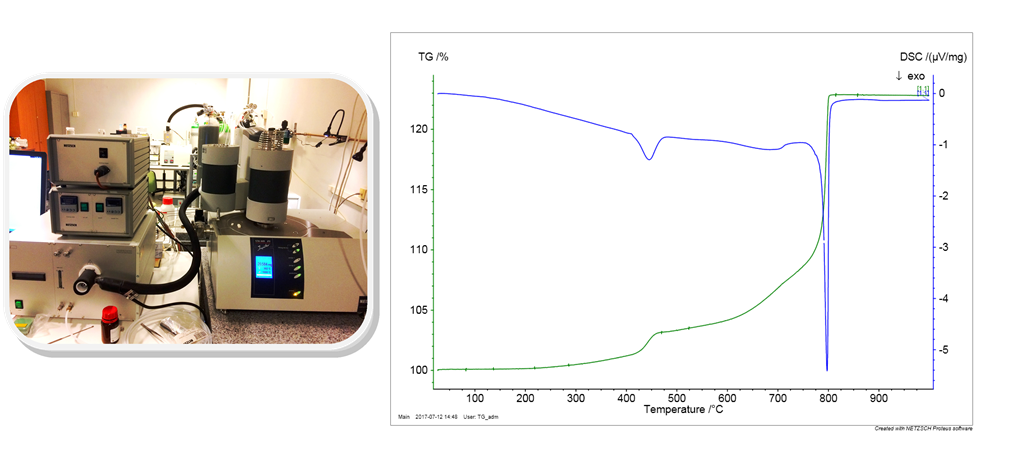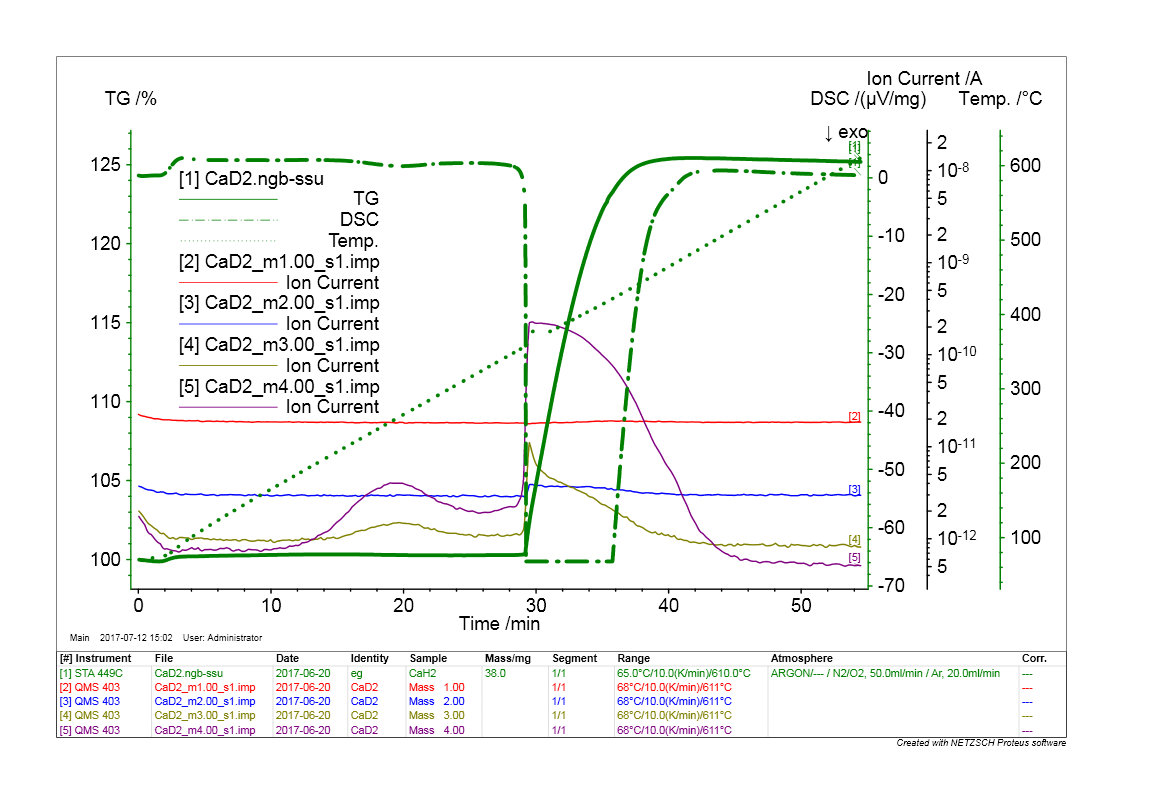The Netzsch STA449F1 Jupiter
The Netzsch STA449F1 Jupiter is a Simultaneous Thermal Analyser (STA), with high sensitivity sensors available for both TGA, TGA-DSC and TGA-DTA configurations. Measurements can be performed up to 1550°C with a silicon carbide furnace, or up to 1250°C with a water vapor furnace. The heating and cooling rates are in the range of 0.001-50 K/min depending on the type of furnace. High quality experiments can be achieved with the high balance and temperature resolutions (respectively 0.025 μg and 0.001K). The DSC enthalpy accuracy is ±2% for a properly executed experiment.
The Netzsch STA 449 Jupiter is also equipped with two gas lines (protective and purge) monitored by independent mass flow controllers. Experiments under particular atmospheres can be carried out after approval from one the instrument responsible. An oxygen trap system can also be mounted to eliminate ppm level traces of oxygen from high purity instrument gases. Organics will generally not be allowed into the instrument for fear of contamination downstream of the sample, which could impact the sensitive instrument’s performance.
Examples of applications: identification of phase transitions and calculation of their enthalpies, degree of crystallinity, analysis of glass transitions, experiments performed to determine vapor pressure.

Netzsch STA449C Jupiter
The Netzsch STA449C Jupiter Simultaneous Thermal Analyser (STA) connected to a “QMS403 Aëolos” mass spectrometer. The spectrometer has a mass range of 1 to 300 Da.
The Netzsch STA449C Jupiter is also equipped with two gas lines (protective and purge) monitored by independent mass flow controllers, it operates up to a maximal temperature of 600°C. The heating and cooling rates are in the range of 0.1-50 K/min. The balance and temperature resolutions are 0.1 μg and <1K respectively. The DSC enthalpy accuracy is ±3% for a properly executed experiment.
An attached liquid nitrogen cryosystem allows the temperature in the sample to be lowered to -150°C for special experiments. Furthermore, it is equipped with a turbopump can produce high vacuum conditions in the sample chamber.
